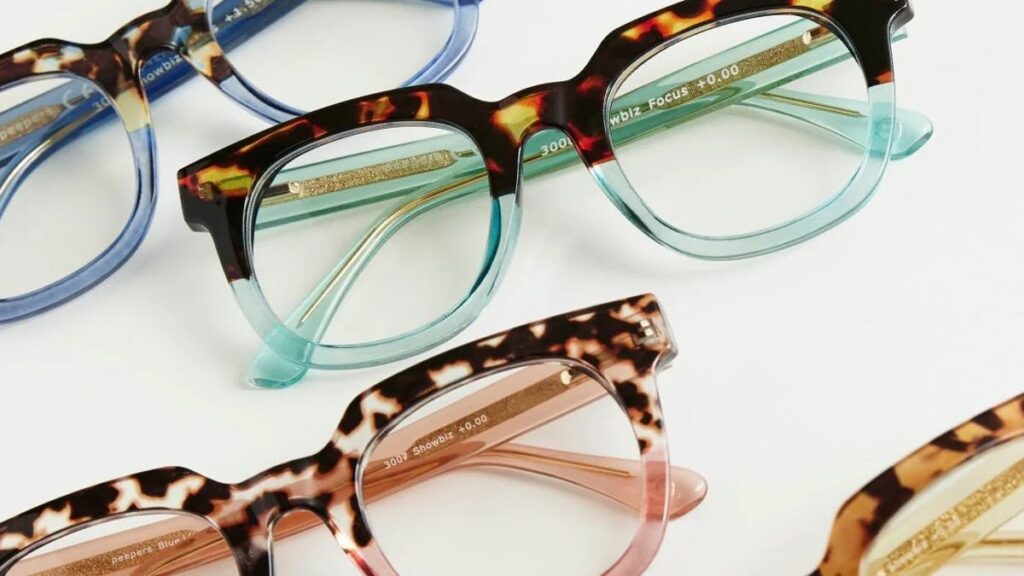Strength
Reading glasses typically range from +0.25 to +2.50 diopters (the unit of measurement for eye prescriptions), though the average starting strength is usually around +0.75. In rare cases, reading glass strength can go up to +4.00.
“Tips for buying reading glasses online are similar to buying ready-made reading glasses at the drugstore: It’s a convenient option but it’s not a good idea for everyone,” says Dr. Ravi Goel, clinical spokesperson for the American Academy of Ophthalmology. “If you have different prescription needs in each eye, astigmatism, high-power or more complex prescription needs, you should see an eye care professional for updated prescription eyewear.”
Reed seconds this, adding, “The wrong prescription can lead to headaches, eye strain or even nausea. If you do choose to buy online, we recommend selecting a lower power when deciding between two strengths, as this is generally a safer choice, and overly strong lenses tend to cause more discomfort than those that are slightly weaker.”
Goel notes that everyone older than 40 should see an ophthalmologist for a medical eye exam because that is the age when presbyopia and potentially blinding eye diseases usually begin developing. Plus, not all eye diseases begin with noticeable symptoms.
Type of reading glasses
“There are four main types of reading glasses: single vision, bifocal, trifocal and progressive,” says Goel, defining them as:
- Single-vision reading lenses are typically designed to correct just for near vision.
- Bifocal lenses have a correction for reading on the bottom half of the lens and another for distance on the top.
- Trifocal lenses have three sections: distance, intermediate and near vision. Reed says these can be particularly helpful for people over 50 experiencing reduced depth of focus.
- Progressive lenses have a smooth transition between distance and near focal areas without visible dividing lines. “They deliver a more natural look and a smoother transition between different viewing distances,” adds Reed.
“When generic OTC readers are no longer enough, prescription reading glasses — also called single-vision readers — are a great next step. These are custom-made by an eye doctor to correct for astigmatism, unequal prescriptions or other specific vision needs,” says Reed. “For those who need multiple levels of vision correction, there are multifocal lenses.”
The best lens material
“This depends on lifestyle,” Goel says. “For example, if you spend a lot of time outdoors, you might prefer polycarbonate, which is lightweight and doesn’t break easily. There are also various lens coatings available for convenience (i.e., anti-reflective coatings) but are not required.”
Goel notes that the American Academy of Ophthalmology doesn’t recommend blue light-blocking coatings or lenses because “there is no scientific evidence to suggest blue light-blocking glasses help reduce eye strain.” Instead, take breaks from near-work activity and use eye drops if necessary. If you continue to experience symptoms, see an ophthalmologist.
According to Reed, most people choose among the following three lens materials for reading glasses:
- CR-39 plastic lenses: Affordable, lightweight and provide good optical clarity, making them a popular choice for basic reading glasses.
- Polycarbonate lenses: Lighter and significantly more impact-resistant than CR-39 plastic, making them a safer option for people who tend to drop their glasses or want something more durable.
- High-index plastic lenses: Thinner and lighter than other materials and are a good choice for people who need a stronger prescription but want to avoid thick, heavy lenses.
“For most reading glasses, especially for occasional or indoor use, CR-39 plastic works well,” says Reed. “If you need extra durability or prefer thinner, lighter lenses, polycarbonate or high-index materials may be a better fit. Your doctor of optometry can help recommend the best lens material based on your specific needs.”
Reed adds that not all lens materials and coatings are created equal. That’s why it’s important to check with your eye doctor to ensure the reading glasses you choose are the right fit for you.
Style
One of the most fun parts of buying glasses is finding a frame that speaks to your personal style and fits with your face shape. When shopping for glasses online, pay attention to the material, color and width.
Price
Reading glasses can range from affordable to expensive. For instance, if you want a designer pair of reading glasses, be prepared to spend over $100. If you tend to lose your reading glasses, you may want to buy more inexpensive pairs to keep multiple on hand.
“Price of eyeglasses is not necessarily reflective of quality; the real question is if someone finds the ready-made reading glasses helpful or if they need custom reading glasses to meet their vision needs,” explains Goel.
“In general, spending more on frames doesn’t mean you’ll end up with better-quality eyeglasses. You don’t need designer frames to have a good set of glasses. For prescription lenses, such as bifocal, trifocal or progressive lenses, an optician will help you select good lenses that best meet your vision needs. A personalized evaluation of vision needs is a value-add that is often missed by online sellers.”
Additional coatings
You can get reading glasses with lenses treated with blue light, anti-glare and polarization coatings. But note that you’ll likely have to pay extra for these.
Shipping and returns
If you buy your reading glasses online, you likely won’t get to try them on before you buy. As a result, ensure the company has a return and exchange policy you can work with. As for shipping, if you need your reading glasses ASAP, you’re better off going with a company that offers express or overnight shipping.
Read the full article here

